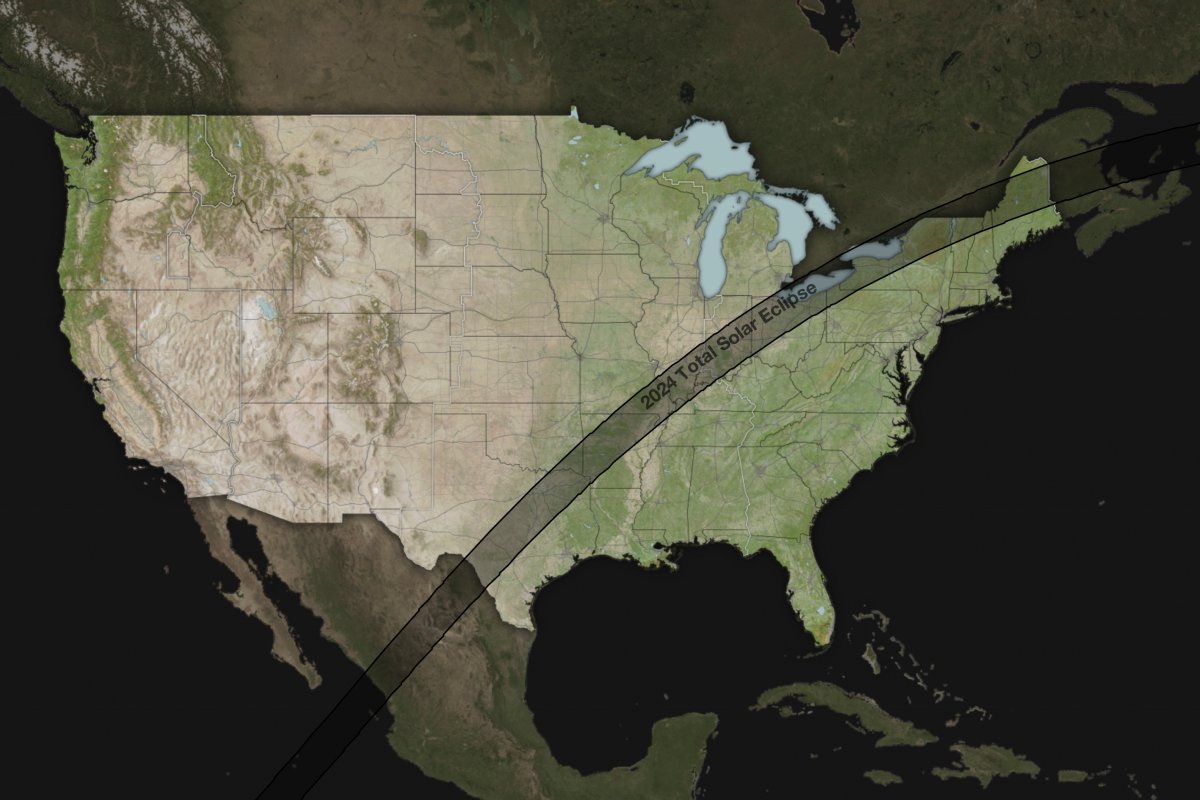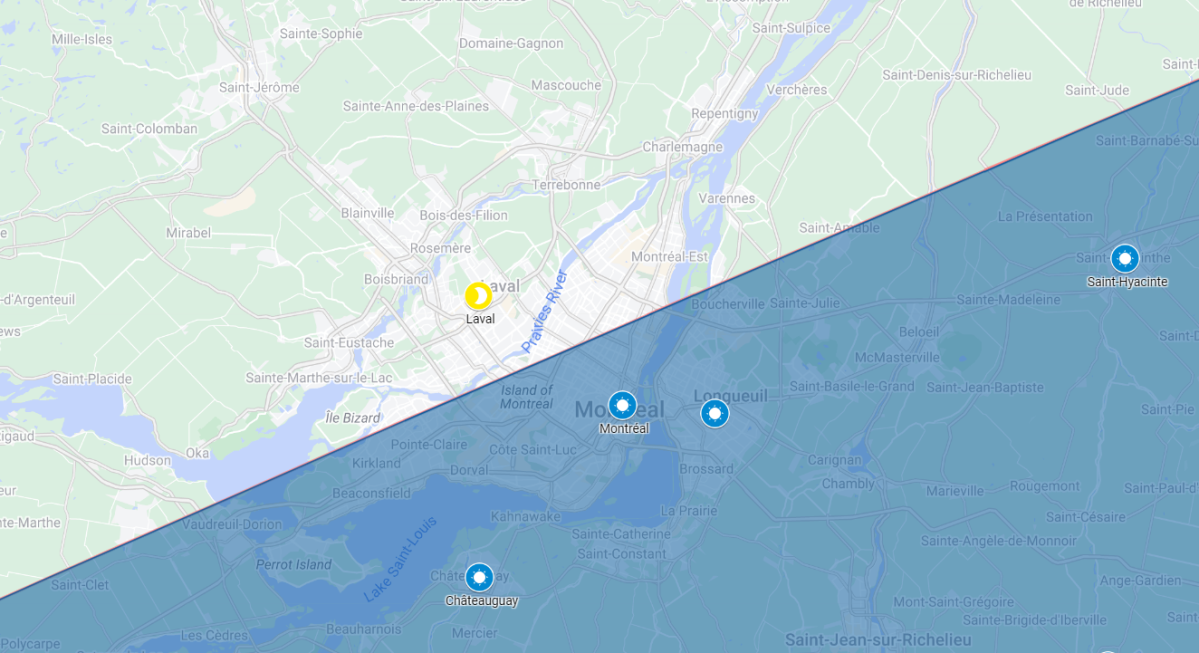Excitement is mounting in Montreal as the total solar eclipse nears, which is set to put much of the city into complete darkness for a few minutes during the afternoon on April 8.

“We want everyone to remember where they were when it happened,” astrophysicist and Montreal Planetarium director Olivier Hernandez told Global on Wednesday. “This will be extraordinary.”
The spectacular and rare celestial event occurs when the moon passes between Earth and the sun, aligning perfectly and completely blocking the sunlight — casting the moon’s shadow onto Earth.
The city’s Espace pour la Vie, which consists of five natural museums — the Biosphere, Biodome, Planetarium, Botanical Garden and Insectarium — has teamed up with Parc Jean-Drapeau to host what Hernandez says could be up to 80,000 people to witness the once-in-a-lifetime “eclipse of the century.”
“We have a complete team thinking about all the details. The last time we witnessed this in Montreal was in 1932, and the next one will be in 2205,” Hernandez said.
The director added that he wanted to stress that the public must get to the venue via the metro, which will be adapted for easy and clear transit for the day. Once people arrive, everyone will get a pair of solar protection glasses and be directed to science expositions and introductory information before it takes place.
There will be 150,000 pairs of glasses distributed free of charge. The site will open at 11 a.m. and events will run until 5 p.m., and no advance registration is required. The eclipse will start at 2:14 p.m. and end at 4:36 p.m., and the total eclipse will happen at 3:26 p.m.
“A total eclipse is emotional — you feel the dark, you feel the drop of temperature and you can see stars in the dark around the sun. I think and hope it will be sunny, but even if it’s cloudy, that’s not a problem, ” he said, noting that much of the clouds should disappear due to the drop of temperature.
Millions of people in parts of eastern Canada will get to witness this celestial event. The last time the country got to experience the phenomenon was 45 years ago.
The eclipse will enter over Mexico’s Pacific coast, dash up through Texas and Oklahoma, and crisscrossing the Midwest, the Mid-Atlantic and New England, before exiting over Eastern Canada into the Atlantic.
The dark shadow will be cast onto slim parts of Quebec, Ontario, New Brunswick, Prince Edward Island, Nova Scotia, and Newfoundland and Labrador. Several cities and towns located on the narrow arc will go into complete darkness.
The arc will be roughly 185 kilometres wide. Not all of Montreal will fall under it — parts of the city’s East and North ends will only get to see a partial eclipse.
The event is set to drive massive amounts of tourism to the city that day, with at least tens of thousands expected. Data from Airbnb reported a surge for listings in places that are on the totality path for April 8.
The Quebec government’s website says it will “seem as if night has fallen for a few minutes.”
Protection
Observing the sun without using protective equipment should be avoided, experts say, as it can cause permanent damage to the eyes, even with conventional sun protection such as sunglasses or contact lenses.
The risk of damage increases during eclipses, as the sun’s luminosity decreases, which reduces the eye’s protective reflex.
During a solar eclipse, the many mechanisms that normally protect the eye, such as the automatic averting of the gaze, the eyelid closure reflex and watering of the eyes, are reduced or absent, since the luminosity emitted by the sun is less powerful.

Because solar radiation is so intense during the occurrence, it can damage the eye’s retina and cause permanent vision problems. Eye problems can emerge as lesions in the retina that are painless on exposure but can be irreversible, or lesions on the cornea caused by ultraviolet rays. The latter are “painful lacerations (that) lead to a sharp drop in visual acuity and intolerance to light,” the Quebec government warns.
The province’s website has more information on how to safely directly or indirectly observe the event, as well as an interactive map showing the eclipse’s trajectory.
Typically, a total solar eclipse is visible once roughly every 18 months or once every one to two years from somewhere on Earth, but for a given location this event can be happen once a century or even after a gap of centuries.
–with files from Global News’ Saba Aziz and Shane Gibson
- Posters promoting ‘Steal From Loblaws Day’ are circulating. How did we get here?
- Solar eclipse eye damage: More than 160 cases reported in Ontario, Quebec
- Video shows Ontario police sharing Trudeau’s location with protester, investigation launched
- Investing tax refunds is low priority for Canadians amid high cost of living: poll













Comments